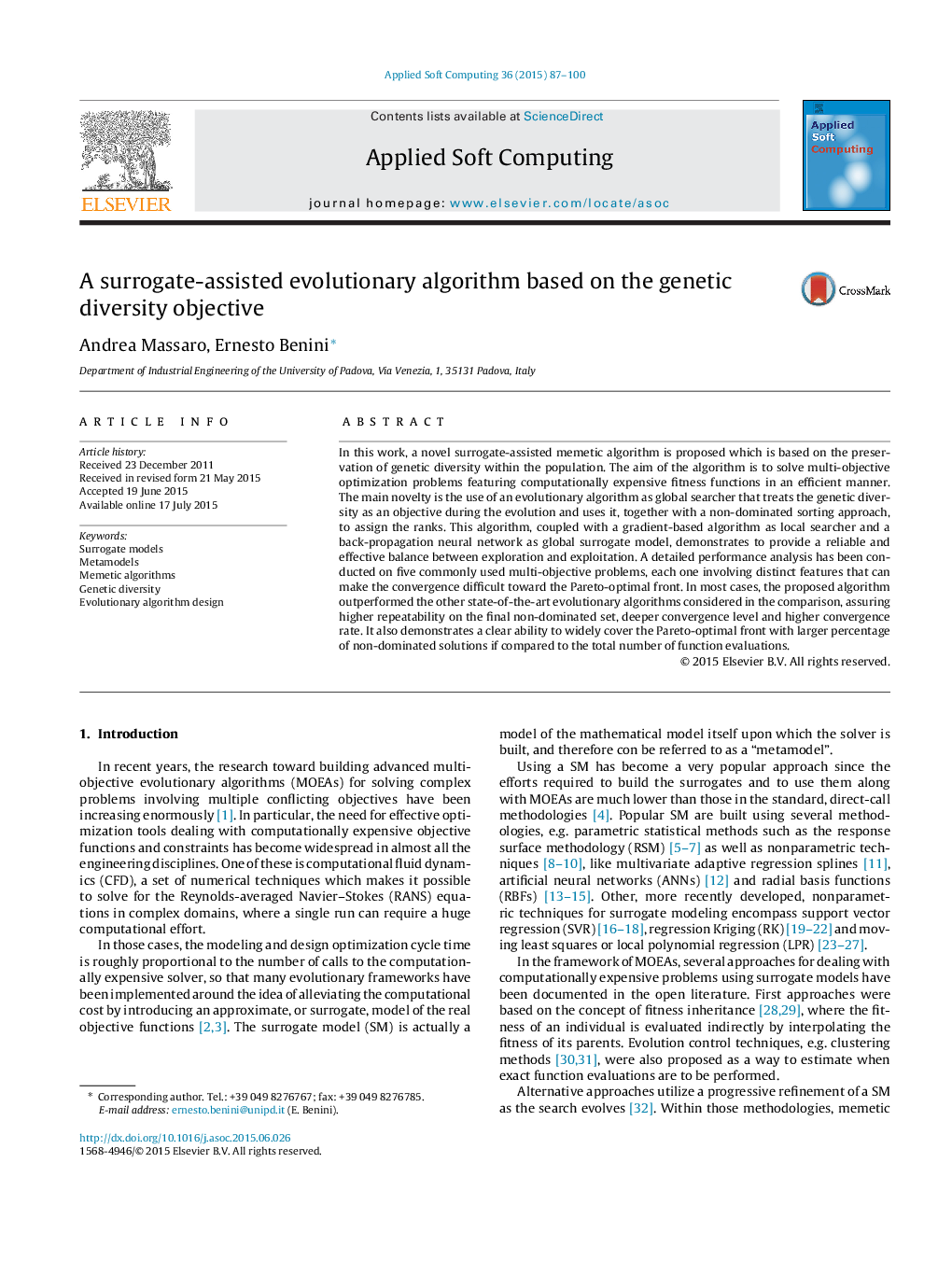| Article ID | Journal | Published Year | Pages | File Type |
|---|---|---|---|---|
| 494796 | Applied Soft Computing | 2015 | 14 Pages |
•A novel surrogate-assisted memetic algorithm is proposed.•Multi-objective optimization problems featuring expensive fitness are dealt with.•Evolutionary, gradient-based algorithms and a back-propagation neural network are used.•Detailed performance analysis has been conducted.•Proposed algorithm outperformed the other state-of-the-art evolutionary algorithms.
In this work, a novel surrogate-assisted memetic algorithm is proposed which is based on the preservation of genetic diversity within the population. The aim of the algorithm is to solve multi-objective optimization problems featuring computationally expensive fitness functions in an efficient manner. The main novelty is the use of an evolutionary algorithm as global searcher that treats the genetic diversity as an objective during the evolution and uses it, together with a non-dominated sorting approach, to assign the ranks. This algorithm, coupled with a gradient-based algorithm as local searcher and a back-propagation neural network as global surrogate model, demonstrates to provide a reliable and effective balance between exploration and exploitation. A detailed performance analysis has been conducted on five commonly used multi-objective problems, each one involving distinct features that can make the convergence difficult toward the Pareto-optimal front. In most cases, the proposed algorithm outperformed the other state-of-the-art evolutionary algorithms considered in the comparison, assuring higher repeatability on the final non-dominated set, deeper convergence level and higher convergence rate. It also demonstrates a clear ability to widely cover the Pareto-optimal front with larger percentage of non-dominated solutions if compared to the total number of function evaluations.
Graphical abstractFigure optionsDownload full-size imageDownload as PowerPoint slide
